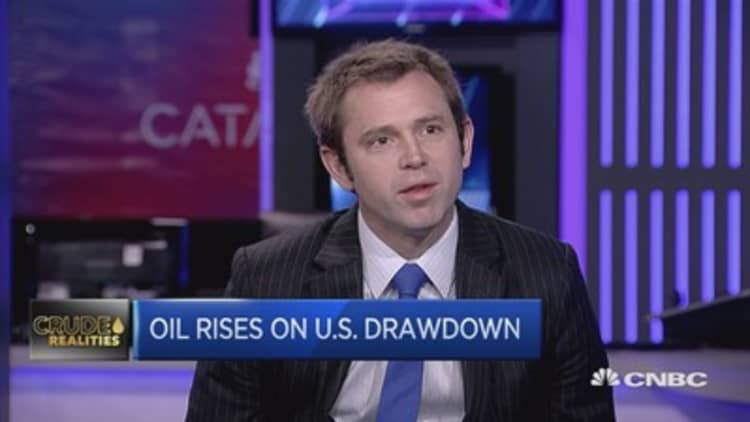
Oil jumped about 2 percent on Monday, after Saudi Arabia and Russia said that supply cuts need to last into 2018, a step towards extending an OPEC-led deal to support prices for longer than first agreed.
Energy ministers from the world's two top producers said that supply cuts should be prolonged for nine months, until March 2018. That is longer than the optional six-month extension specified in the deal.
U.S. crude settled $1.01, or 2.1 percent, higher at $48.85 a barrel, off a session peak of $49.66. Brent crude, the global benchmark, rose 95 cents, or 1.9 percent, to $51.79 a barrel by 2:39 p.m ET (1639 GMT), after earlier rising to a three-week high of $52.63.
Oil traders were surprised by the strong wording of the announcement, although it remained to be seen whether all countries participating in the deal would agree with the Saudi-Russian stance. Some analysts doubted producers would stick to a prolonged curb.
"Extending the cuts until March 2018 would take account of the fact that demand in the first quarter of a year is lowest for seasonal reasons," said Carsten Fritsch, analyst at Commerzbank.
"That said, we are skeptical about Russia's willingness to actively participate in any extended cuts."

Other analysts said that U.S. production could still threaten to disrupt the market balance unless the cuts were deepened.
"We are of the camp that the extension cuts might not be enough - they might need to extend the cuts and to increase them to stabilize this market," said Oliver Sloup, director of managed futures at iitrader.com.
U.S. production is currently forecast to rise to about 9.31 million barrels per day this year, and Sloup says it could surpass that if buoyed by higher prices.
Oil prices slightly pared gains on Monday after the U.S. Department of Energy reported forecast that output from U.S. shale basins — one of the primary sources of output growth — would increase by 122,000 barrels a day in June
The Organization of the Petroleum Exporting Countries, Russia and other producers originally agreed to cut output by 1.8 million barrels per day in the first half of 2017, with a possible six-month extension.
Oil has gained support from the supply deal but inventories remain high and output from other producers such as the United States is rising, keeping prices below $60. U.S. energy firms added oil rigs for a 17th week in a row, extending a 12-month drilling recovery, energy services firm Baker Hughes Inc said on Friday.

"There has been a marked reduction to the inventories, but we're not where we want to be in reaching the five-year average," Saudi Energy Minister Khalid al-Falih told a briefing in Beijing alongside his Russian counterpart Alexander Novak.
"We've come to the conclusion that the agreement needs to be extended."
The ministers said they hoped other producers would join the supply cut, which would initially be on the same volume terms as before. Kazakhstan, however, said it could not join a prolonged cut on the same terms.
"When the two biggest oil producers of the world reach a consensus on the extension of a supply cut the market will listen," said Tamas Varga of oil broker PVM in a report, of the rise in prices on Monday.
"Rhetoric is doing its job but this must be backed by action in less than two weeks' time."
Ministers from OPEC and the non-OPEC countries meet to decide policy on May 25 in Vienna, and OPEC has also invited two small producers not involved in the original deal, Egypt and Turkmenistan, to attend.

